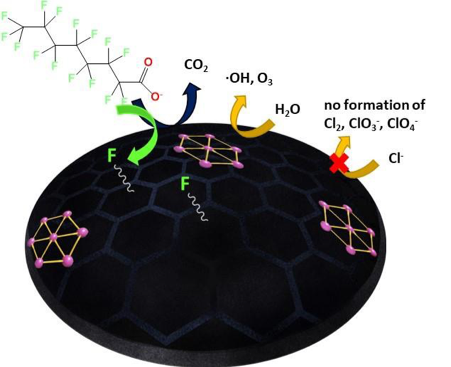Services

Poly- and perfluorinated substances (PFAS) have been used since the 1940s and are known as “eternal chemicals” due to their extreme persistence in advanced water (waste) treatment strategies. Because of the strength of the CF bond, each released molecule of PFAS remains in the environment. More than 9,000 PFASs are currently known, most of which are extremely resistant to any type of degradation and have a high potential for bioaccumulation and toxicity.
Electrochemical processes can address the challenge of the presence of PFAS in water, as long as the anode material is low-cost and can break the CF bond without forming toxic byproducts. The graphene sponge anode developed by our team is the first material that meets both requirements.
The aim of this project is to scale up electrochemical treatment based on graphene sponge electrodes and test its long-term performance in PFAS degradation from complex waste streams. This will allow us to answer key scientific and technical questions needed for further adoption of the technology by the water industry, many related to the fundamental mechanisms of electrochemical CF bond breaking and the characteristics of anodically polarized graphene .
Based on the results obtained so far at the laboratory scale, the GRAPHEC technology has great potential to become a sustainable technology for chemical-free destruction of PFAS-laden wastewater and achieve its complete destruction at ambient temperature and pressure, in modular units, with low capital and operating costs.
Finally, this project also aims to preserve existing intellectual property and engage early technology adopters in Europe and beyond to form a mature network of future customers and achieve a Technology Readiness Level (TRL) 6 by the end of the project . The project will provide a new platform technology for the removal of toxic and persistent chemicals from water and is likely to play a key role in the EU’s Green Action Program to ensure a toxic-free environment.